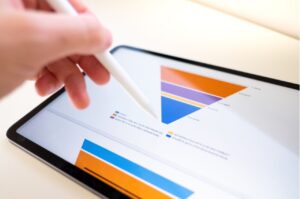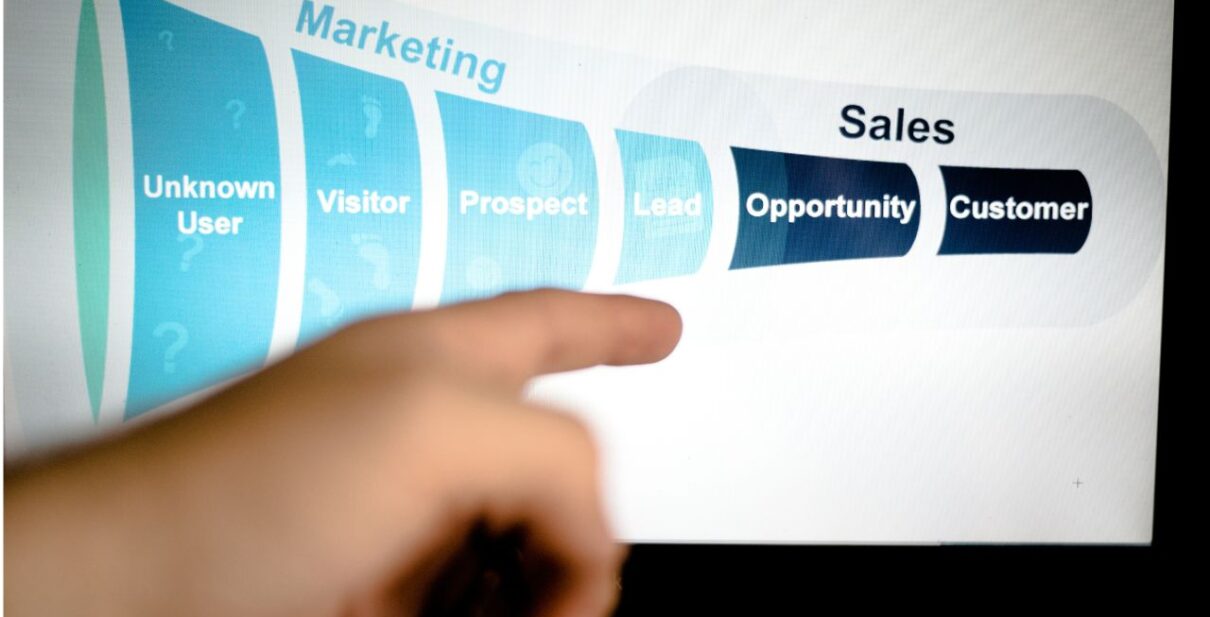Optimising Your Ecommerce Marketing Funnel for Maximum Conversion
Diving into the world of ecommerce can sometimes feel like navigating through a dense jungle. There are paths everywhere, but finding the one that leads to treasure — maximum conversion — requires more than just luck. It requires a map: the ecommerce marketing funnel. This funnel isn’t just about getting visitors to your site; it’s about guiding them smoothly from discovery to purchase. So, let’s roll up our sleeves and chart a course through each stage of this journey, ensuring no potential customer gets lost along the way.
Understanding the Ecommerce Marketing Funnel
First off, what exactly is an ecommerce marketing funnel? Imagine a real funnel, wide at the top and narrow at the bottom. This is a metaphor for your customer journey. At the top, you have a broad audience who just found out about your brand. As they move down the funnel, they show more interest, decide they like your products, and, ideally, make a purchase at the narrow end.
The stages — Awareness, Interest, Decision, and Action — are milestones in the customer’s journey. Each stage requires different strategies to keep potential customers engaged and moving forward. Understanding these stages is like understanding the rules of the game; it’s your first step toward winning.
Analysing Your Current Ecommerce Funnel
Before you can optimise your funnel, you need to know what it looks like. Mapping out your current funnel involves identifying the customer touchpoints — from how they find your site (SEO, ads, social media) to what happens after they make a purchase (thank you emails, follow-ups, loyalty programs).
Using tools like Google Analytics, you can track how visitors navigate through your site, where you lose them, and where they convert. It’s like being a detective, looking for clues to solve the mystery of “Why aren’t more people buying?” This analysis helps identify the leaks in your funnel where potential customers drop off instead of moving to the next stage.
Awareness: Expanding Your Reach
Now, let’s talk about expanding your reach. The Awareness stage is all about making sure as many people as possible know about your brand. Think of it as shouting from the rooftops, but in a way that’s not annoying. Effective strategies include SEO (to ensure people find you when they search for relevant terms), content marketing (to provide valuable information that draws people in), and social media (to engage with your audience where they hang out).
It’s also about creating content that resonates. Whether it’s blog posts, videos, or infographics, your content should speak to the needs and interests of your potential customers. It’s like throwing a wide net; the goal is to capture as much attention as possible and funnel it down to the next stage.
Interest: Engaging Your Audience
Once you’ve caught their attention, the next step is to keep them interested. This is where you start to build a relationship. You’ve got their attention; now show them you’re worth their time. Email marketing is a powerful tool here. It’s like inviting them into your living room for a chat over coffee. Personalised emails that cater to their interests can make them feel special and keep them engaged.
Targeted advertising also plays a crucial role. By using data from your site and social media, you can retarget visitors with ads that remind them of the products they viewed but didn’t purchase. It’s a gentle nudge, reminding them, “Hey, remember us? We’ve got exactly what you need.”
At this stage, your website must be engaging and easy to navigate. If your site is the party, your content is the host — it needs to be welcoming and interesting enough to keep guests from leaving early. From compelling product descriptions to attractive visuals, every element should work together to maintain interest and gently guide visitors to the Decision stage.
Decision: Influencing the Purchase Decision
The Decision stage is where your potential customer is on the fence. They’re interested, but they need that final push to make a purchase. This is where your product pages shine. They’re not just lists of features; they’re your digital sales pitch. High-quality images, compelling descriptions, and clear value propositions are your best friends here. It’s like presenting the best version of your product, dressed to impress, convincing the customer, “Yes, this is exactly what you need.”
But there’s more to it than just looks. Customer reviews and testimonials can work wonders in nudging that decision. It’s like having a crowd of cheerleaders, all chanting how great your product is. This social proof can alleviate doubts, showing potential buyers that others have taken the leap and are delighted they did.
Action: Streamlining the Checkout Process
Once they’ve decided to buy, the path to purchase should be as smooth as silk. Any bumps or hiccups here can undo all your hard work. The Action stage is about making the checkout process as simple and seamless as possible. Think about it: nobody likes standing in a long line at the store. Similarly, a complicated checkout process online can be just as off-putting.
This means eliminating unnecessary steps, offering multiple payment options, and ensuring your site loads quickly and is easy to navigate, especially on mobile devices. Trust signals like security badges and clear return policies can also reassure customers, giving them the confidence to complete their purchase. It’s all about removing barriers, making it so easy to buy that completing the purchase is the natural next step.
Retention: Keeping Customers Coming Back
Congratulations, you’ve made a sale! But the journey doesn’t end here. The Retention stage is where one-time buyers become loyal customers. This is where excellent customer service, follow-up emails, and loyalty programs come into play. It’s about showing appreciation for their business and giving them reasons to return.
Think of it as planting seeds for future sales. Personalized thank you messages, offers based on past purchases, and exclusive sneak peeks at new products can keep your brand top of mind. Loyalty programs, offering rewards for repeat purchases, can turn satisfaction into devotion. It’s not just about a single sale; it’s about fostering a relationship that encourages customers to come back again and again.
Leveraging Data to Optimise the Funnel
Data is the compass that guides you through the ever-changing landscape of ecommerce. By analysing customer behaviour, purchase patterns, and feedback, you can gain invaluable insights into how to optimise each stage of the funnel. This isn’t about collecting data for the sake of it; it’s about turning those numbers into actionable insights.
Which marketing channels bring in the most engaged traffic? At what point do most customers drop off during the checkout process? How do different customer segments respond to your marketing efforts? These are the kinds of questions data can help you answer. Tools like Google Analytics, heat maps, and customer surveys can provide a wealth of information, helping you to fine-tune your strategies for maximum effectiveness.

A/B Testing for Funnel Optimization
A/B testing is your scientific method for marketing success. Think of it as a taste test: you present two versions of a webpage, email, or ad (A and B) to similar audiences to see which one performs better. This method allows you to make data-driven decisions rather than relying on guesswork.
Want to know if a red “Buy Now” button converts better than a green one? Or if a more casual tone in your product descriptions engages customers more effectively? A/B testing gives you the answers. By systematically testing and optimising each stage of your marketing funnel, you can incrementally improve your conversion rates, leading to more sales and happier customers.
Incorporating Customer Feedback into Funnel Optimization
Listening to your customers is like having a direct line to the best business advisor you could ask for. Customer feedback can highlight issues you weren’t aware of and suggest improvements you hadn’t considered. Use surveys, feedback forms, and social media listening to gather this goldmine of insights.
Acting on customer feedback not only optimises your marketing funnel but also builds stronger relationships with your audience. It shows that you value their opinions and are committed to providing the best shopping experience possible. This level of attentiveness can turn satisfied customers into enthusiastic brand ambassadors.
Keeping Your Funnel Optimization Agile
In the fast-paced world of ecommerce, agility is key. Consumer behaviours and market trends can shift rapidly, and your marketing funnel needs to be flexible enough to adapt. This means staying informed about the latest digital marketing strategies, technologies, and consumer preferences. It also means being willing to pivot your approach when something isn’t working or when there’s an opportunity to capitalise on a new trend.
An agile funnel optimization strategy isn’t set in stone; it’s a living, breathing process that evolves with your business and your customers. Regularly reviewing your funnel’s performance, experimenting with new tactics, and listening to customer feedback will keep your marketing efforts fresh and effective.
Conclusion
Optimising your ecommerce marketing funnel for maximum conversion isn’t a one-time task; it’s an ongoing journey of discovery and refinement. By understanding the stages of the funnel, analysing your current performance, and implementing strategies to enhance each phase, you can create a seamless path that guides potential customers from initial awareness to loyalty advocacy.
But don’t stop there. Use A/B testing to fine-tune your approach, listen to your customers to ensure their needs are being met, and stay agile, ready to adapt to the ever-changing ecommerce landscape. Remember, the goal is not just to make a sale but to build a relationship that keeps customers coming back for more.
Ready to take your ecommerce business to the next level? Dive into your marketing funnel with these strategies in mind, and watch as your conversion rates — and customer satisfaction — soar. Let’s get optimising!









